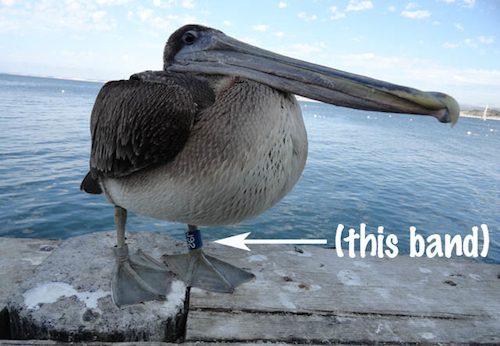 J92, a juvenile Brown Pelican rehabilitated and released by International Bird Rescue. Photo by Rebecca Dmytryk of WildRescue
J92, a juvenile Brown Pelican rehabilitated and released by International Bird Rescue. Photo by Rebecca Dmytryk of WildRescue
At International Bird Rescue, this has truly been the year of the Brown Pelican
International Bird Rescue has received a record number of Brown Pelicans (Pelicanus magnificens) this year needing rehabilitation. Beginning in 2009, they began putting larger, blue plastic bands on their rescued pelican’s legs for easy identification. And soon, they will be banding their 1,000th blue-banded pelican. Another milestone for International Bird Rescue.
I was privileged to tour this excellent organization’s San Francisco Bay facility in September and I was impressed. These people work tirelessly to save and rehab birds on a large scale.
They need your help now to report any banded birds you may find while on your birding adventures.
Want to get involved? Here are two of the best ways to do so:
1. Look for blue-banded pelicans — at the beach, the piers, or wherever pelicans hang out. It’s fun and you may get to see one or more of the birds that they have cared for. Make sure to catch the band number, then let them know about your sighting at Report a Bird on their website.
2. Become a supporter of International Bird Rescue. Pelicans are extremely costly to rehabilitate and release back into the wild. As the limerick goes, A wonderful bird is the Pelican // His beak can hold more than his belly can. Their staff can attest to this firsthand! These birds consume about half their body weight per day — and the fish bill adds up. Your donation will help ensure that International Bird Rescue’s mission to help pelicans and other aquatic birds in need continues.
You can read the full story on the International Bird Rescue website.









Comments on this entry are closed.
I feel so dumb,I never knew that there were brown pelicans,what a different looking bird,thanks for sharing!phyllis